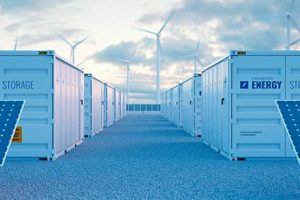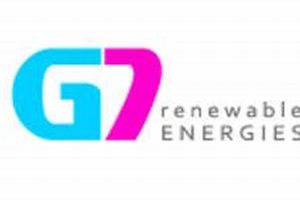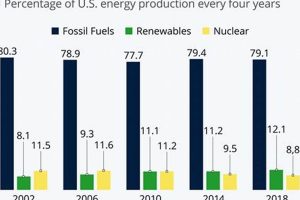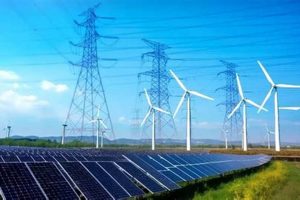Quantifying energy generated from renewable sources involves distinct methodologies depending on the specific resource. Solar power is typically measured in kilowatt-hours (kWh) using electricity meters that track the output of photovoltaic systems. Wind energy is similarly quantified in kWh, with anemometers measuring wind speed and specialized software calculating energy production based on turbine characteristics. Hydroelectric power relies on measuring water flow rates and pressure differences across turbines to determine energy output. Geothermal energy measurements often involve assessing the temperature and flow rate of geothermal fluids. Biomass energy production, whether through direct combustion or biogas generation, is frequently quantified by the mass or volume of the fuel source and its energy content.
Accurate measurement is fundamental for evaluating the effectiveness of renewable energy technologies, optimizing their performance, and integrating them into existing energy grids. These data are critical for policymakers in developing effective energy policies, for investors in making informed decisions, and for researchers in advancing renewable energy technologies. Historically, the lack of standardized measurement practices posed challenges to the widespread adoption of renewable energy. The development of reliable and consistent methodologies has been instrumental in fostering market growth and demonstrating the viability of these resources.
This understanding of energy quantification provides a foundation for exploring various aspects of renewable energy, including resource assessment, project development, grid integration, and policy implications. Subsequent sections will delve into specific renewable technologies, examining their unique measurement challenges and advancements.
Tips for Understanding Renewable Energy Measurement
Accurate and reliable measurement is crucial for the effective utilization of renewable energy resources. The following tips provide guidance for navigating the complexities of this field.
Tip 1: Distinguish between energy and power. Energy represents the total amount of work performed or heat produced, typically measured in kilowatt-hours (kWh). Power, measured in kilowatts (kW), represents the rate at which energy is generated or consumed.
Tip 2: Consider resource-specific measurement methods. Solar energy relies on measuring irradiance and panel efficiency, while wind energy depends on wind speed and turbine characteristics. Hydropower utilizes flow rate and pressure differentials. Understanding these nuances is essential for accurate assessment.
Tip 3: Account for environmental factors. Temperature, humidity, and cloud cover can influence solar power output. Wind speed and direction are critical for wind energy. Hydropower generation is affected by precipitation and reservoir levels.
Tip 4: Utilize calibrated equipment. Accurate measurements necessitate properly calibrated instruments. Regular maintenance and calibration ensure data reliability.
Tip 5: Employ data analysis techniques. Statistical analysis and data visualization can reveal trends and patterns in energy production, facilitating performance optimization and predictive modeling.
Tip 6: Stay informed about industry standards. Adhering to established standards and protocols ensures data comparability and facilitates integration into existing energy systems.
Tip 7: Recognize the limitations of measurement techniques. No measurement method is without limitations. Understanding potential sources of error and uncertainty is crucial for interpreting data accurately.
By understanding these key aspects of renewable energy measurement, stakeholders can make informed decisions regarding project development, policy implementation, and investment strategies.
These insights into measurement practices pave the way for a more detailed examination of specific renewable energy technologies and their integration into a sustainable energy future.
1. Technology-Specific Methods
Accurately measuring renewable energy generation necessitates specialized techniques tailored to each technology. These technology-specific methods form the foundation for understanding resource potential, optimizing system performance, and integrating renewable sources into energy grids. This exploration delves into the nuances of these methodologies, highlighting their role in quantifying renewable energy production.
- Solar Power Measurement
Solar power generation is typically quantified using electronic meters that track the direct current (DC) output of photovoltaic (PV) panels. This output is then converted to alternating current (AC) for grid integration, and the total energy produced is measured in kilowatt-hours (kWh). Additional measurements, such as solar irradiance using pyranometers, provide insights into resource availability and panel efficiency. Factors like panel angle, temperature, and shading can significantly influence measurements and require careful consideration.
- Wind Energy Measurement
Quantifying wind energy relies heavily on assessing wind speed and direction using anemometers positioned at various heights. These measurements, combined with data on turbine characteristics such as blade length and generator efficiency, allow for calculations of energy production. Sophisticated software models consider factors like air density and turbulence to provide accurate estimates of power output in kWh.
- Hydropower Measurement
Measuring hydropower generation involves assessing the flow rate of water through turbines and the pressure difference across them. Flow meters and pressure sensors provide the raw data for these calculations. The height of the water source (hydraulic head) also plays a crucial role in determining potential energy. Variations in reservoir levels and water flow due to seasonal changes influence measurements and require ongoing monitoring.
- Geothermal Energy Measurement
Geothermal energy measurement focuses on the temperature and flow rate of geothermal fluids extracted from underground reservoirs. Temperature sensors and flow meters provide critical data for calculating energy output. The chemical composition of the geothermal fluid can also be analyzed to assess its energy content and potential for corrosion or scaling, which can impact long-term production.
These technology-specific measurement methods are essential for evaluating the performance of renewable energy systems and for integrating these resources into the broader energy landscape. Accurate and reliable data inform investment decisions, policy development, and ongoing research aimed at maximizing the potential of renewable energy sources.
2. Units and Devices
Comprehending how renewable energy is measured necessitates a clear understanding of the units employed and the devices used for data acquisition. These elements are fundamental for quantifying energy production, assessing system performance, and facilitating comparisons across different renewable energy technologies. This exploration delves into the specific units and devices employed in measuring various forms of renewable energy, highlighting their roles and interrelationships.
- Electricity Meters (kWh)
Kilowatt-hours (kWh) serve as the standard unit for quantifying the amount of electrical energy generated. Electronic electricity meters, installed at the point of connection between the renewable energy system and the grid, record the cumulative energy production. These meters provide essential data for billing purposes, performance monitoring, and evaluating the overall energy yield of renewable energy installations. For instance, a solar PV system generating 500 kWh per month indicates its total energy contribution over that period.
- Anemometers (m/s) and Wind Vanes (degrees)
Wind energy assessment relies heavily on measuring wind speed and direction. Anemometers, typically cup or propeller-based, quantify wind speed in meters per second (m/s). Wind vanes, in conjunction with anemometers, determine wind direction in degrees, indicating the prevailing wind patterns. This information is crucial for optimizing turbine placement and predicting energy output. Analyzing wind data from multiple anemometers at different heights helps create a comprehensive wind resource profile for a specific location.
- Flow Meters (m/s) and Pressure Sensors (Pa)
In hydropower systems, flow meters measure the volumetric flow rate of water passing through turbines, typically expressed in cubic meters per second (m/s). Pressure sensors, often piezoelectric or strain gauge-based, quantify the pressure difference across the turbine in Pascals (Pa). These measurements, combined with data on the hydraulic head, allow for precise calculations of power output. Monitoring flow rate and pressure is crucial for optimizing turbine operation and responding to variations in water availability.
- Temperature Sensors (C) and Pyranometers (W/m)
Geothermal energy assessments utilize temperature sensors, often thermistors or thermocouples, to measure the temperature of geothermal fluids in degrees Celsius (C). In solar energy applications, pyranometers measure solar irradiance, the power of sunlight striking a surface, in watts per square meter (W/m). This data is essential for calculating the efficiency of solar panels and predicting energy output under varying solar conditions. Combining temperature and irradiance data enhances understanding of system performance and resource availability.
The interplay between these units and devices provides a comprehensive framework for quantifying renewable energy production. Accurate measurements, facilitated by calibrated devices and standardized units, are fundamental for evaluating the economic viability, environmental impact, and overall effectiveness of renewable energy technologies. This understanding forms the basis for informed decision-making regarding project development, policy implementation, and grid integration strategies.
3. Data Analysis Techniques
Data analysis techniques are integral to interpreting the raw measurements collected from renewable energy systems. These techniques transform raw data into actionable insights, enabling performance optimization, predictive modeling, and informed decision-making. The connection between data analysis and renewable energy measurement lies in the ability to extract meaningful information from collected data, ultimately improving the efficiency and reliability of renewable energy generation.
For instance, in wind energy, analyzing wind speed data collected over time reveals patterns in wind resource availability. Statistical analysis, such as calculating average wind speeds, identifying peak hours, and understanding seasonal variations, informs turbine placement and operational strategies. Similarly, in solar energy, analyzing irradiance data alongside panel temperature and output allows for the identification of performance deviations and potential maintenance needs. Predictive modeling, based on historical data, can forecast energy generation, facilitating grid integration and optimizing energy storage strategies.
Furthermore, data analysis enables comparisons across different renewable energy technologies and locations. Analyzing performance data from various solar farms, for example, allows for the identification of best practices and the optimization of system design. This comparative analysis informs investment decisions, policy development, and the strategic deployment of renewable energy resources. Addressing challenges such as data gaps and measurement uncertainties requires robust data validation and quality control procedures within the analysis process. The insights derived from data analysis are fundamental for advancing renewable energy technologies, maximizing their effectiveness, and integrating them seamlessly into the evolving energy landscape.
4. Calibration and Accuracy
Accurate measurement forms the cornerstone of effective renewable energy management. Calibration, the process of verifying and adjusting measurement instruments to ensure accuracy, plays a critical role in this process. Understanding the connection between calibration and accurate renewable energy measurement is essential for optimizing system performance, validating energy production data, and facilitating reliable integration into energy grids. Calibration ensures that measurement devices provide reliable data, reflecting the true value of the measured quantity, thus supporting informed decision-making in the renewable energy sector.
- Instrument Calibration
Regular calibration of instruments like anemometers, pyranometers, and flow meters is crucial for maintaining data integrity. For example, an improperly calibrated anemometer can underestimate wind speed, leading to inaccurate projections of wind energy generation. Calibration procedures involve comparing instrument readings against known standards, adjusting the instrument as needed, and documenting the process. This ensures that measurements accurately reflect the actual resource availability and system performance.
- Data Validation and Quality Control
Calibration supports robust data validation and quality control processes. By ensuring the accuracy of measurement devices, calibration minimizes measurement uncertainty and enhances data reliability. This is critical for validating energy production data, identifying potential errors, and ensuring the integrity of performance assessments. For instance, comparing calibrated pyranometer data with satellite-derived solar irradiance data can help identify discrepancies and improve data quality.
- Performance Monitoring and Optimization
Accurate measurements, facilitated by proper calibration, are essential for effective performance monitoring and optimization. Calibrated data allows operators to track system performance over time, identify deviations from expected output, and implement corrective actions. For example, consistent underperformance of a solar PV system, identified through calibrated measurements, could indicate shading issues or panel degradation, prompting maintenance or system adjustments.
- Financial and Regulatory Compliance
Accurate energy measurement data, underpinned by rigorous calibration practices, is crucial for financial reporting and regulatory compliance. Renewable energy projects often rely on performance-based incentives and financing mechanisms, requiring accurate and verifiable energy production data. Calibration ensures that reported data meets the required standards for audits, performance verification, and compliance with regulatory frameworks.
The relationship between calibration and accuracy in renewable energy measurement is fundamental for ensuring the reliability and credibility of data used for project development, performance evaluation, and policy decisions. By prioritizing calibration and implementing robust quality control procedures, the renewable energy sector can enhance transparency, optimize resource utilization, and facilitate the successful integration of renewable energy sources into the global energy mix. The continued advancement and standardization of calibration techniques will further strengthen the reliability and effectiveness of renewable energy measurement practices.
5. Standardization and Protocols
Standardized procedures and protocols are essential for ensuring consistency and comparability in renewable energy measurement. These established guidelines dictate methodologies for data acquisition, instrument calibration, and performance reporting. This standardization enables accurate comparisons across different projects, technologies, and locations, facilitating informed decision-making for investors, policymakers, and researchers. For instance, the International Electrotechnical Commission (IEC) develops standards for performance testing of solar photovoltaic modules, ensuring consistent evaluation of panel efficiency across manufacturers and facilitating fair comparisons for consumers. Similarly, standardized protocols for wind resource assessment, such as those developed by the International Energy Agency (IEA), ensure consistency in data collection and analysis, enabling reliable comparisons of wind potential across different geographical regions.
The practical significance of standardization extends beyond data comparability. Standardized protocols for grid integration of renewable energy sources ensure seamless and safe interconnection, promoting grid stability and maximizing the utilization of renewable generation. For example, standardized communication protocols enable real-time monitoring and control of distributed renewable energy resources, facilitating grid balancing and minimizing the impact of intermittency. Furthermore, standardization supports the development of robust certification schemes for renewable energy equipment, ensuring quality and reliability, and fostering consumer confidence. Adherence to standardized testing procedures and performance metrics enables credible comparisons and informed purchasing decisions. This contributes to market transparency and promotes the adoption of high-performing technologies.
Standardization in renewable energy measurement is an ongoing process. As technologies evolve and new measurement challenges emerge, continuous development and refinement of standards are necessary. International collaboration and knowledge sharing play a crucial role in this process, ensuring that standards remain relevant and effective in promoting the growth and integration of renewable energy worldwide. Challenges remain in harmonizing standards across different regions and adapting to rapidly evolving technologies. However, the continued commitment to standardization is essential for unlocking the full potential of renewable energy and transitioning towards a sustainable energy future.
6. Environmental Factors
Environmental factors play a crucial role in the measurement and ultimately the output of renewable energy systems. Understanding these influences is critical for accurate resource assessment, performance prediction, and effective integration of renewable energy into existing energy infrastructure. Variations in environmental conditions can significantly impact the energy generated by renewable sources, highlighting the importance of incorporating these factors into measurement and analysis processes.
- Temperature
Temperature significantly influences the performance of various renewable energy technologies. Photovoltaic (PV) panels, for instance, exhibit reduced efficiency at higher temperatures, impacting power output measurements. Conversely, lower temperatures can affect the viscosity of lubricants in wind turbines, potentially increasing friction and reducing energy conversion efficiency. Accurate temperature measurement and compensation mechanisms are essential for reliable performance assessment and energy yield predictions.
- Solar Irradiance and Cloud Cover
Solar irradiance, the power of sunlight per unit area, directly impacts the energy generated by solar PV systems. Cloud cover, atmospheric aerosols, and seasonal variations in solar angle all influence irradiance levels. Accurate measurement of solar irradiance using calibrated pyranometers is crucial for assessing solar resource availability and predicting energy production. Data analysis techniques, incorporating historical irradiance patterns and cloud cover data, can improve the accuracy of energy yield forecasts.
- Wind Speed and Direction
Wind speed is the primary driver of wind turbine power output. Anemometers, strategically positioned to capture representative wind conditions, provide essential data for assessing wind resources and predicting energy generation. Variations in wind direction, turbulence intensity, and air density also influence turbine performance. Sophisticated modeling tools, incorporating these environmental factors, are used to optimize turbine design, placement, and operational strategies for maximizing energy capture.
- Precipitation and Water Availability
Hydropower generation relies on consistent water availability. Precipitation patterns, snowmelt, and reservoir levels significantly influence the flow rate of water through turbines, directly impacting energy production. Accurate measurement of water flow and pressure, combined with hydrological data and predictive models, informs reservoir management strategies and optimizes power generation. Droughts and changes in precipitation patterns due to climate change pose significant challenges to hydropower generation, highlighting the importance of incorporating these factors into long-term planning and resource assessment.
Accurately accounting for these environmental factors is essential for obtaining reliable measurements of renewable energy generation. Incorporating these factors into data analysis, performance modeling, and forecasting tools enhances the understanding of renewable energy system behavior under varying conditions. This, in turn, informs investment decisions, policy development, and grid integration strategies, ultimately contributing to the effective and sustainable utilization of renewable energy resources. Furthermore, understanding the influence of environmental factors is crucial for adapting to the impacts of climate change and ensuring the long-term viability of renewable energy systems.
Frequently Asked Questions
This section addresses common inquiries regarding the quantification of energy generated from renewable sources. Clear and accurate measurement is fundamental for evaluating the effectiveness of these technologies and integrating them into the energy landscape. The following questions and answers provide further clarity on this critical aspect of renewable energy.
Question 1: How does the intermittent nature of renewable resources affect energy measurement?
The intermittent nature of resources like solar and wind necessitates continuous monitoring and sophisticated data analysis techniques. Measurements must capture fluctuations in resource availability to accurately assess overall energy production and predict future output. This often involves statistical analysis and probabilistic modeling to account for variability.
Question 2: What role does standardization play in ensuring accurate and comparable measurements across different renewable energy technologies?
Standardized measurement protocols and units ensure consistency and comparability across diverse technologies. This facilitates benchmarking, performance evaluation, and informed decision-making regarding technology selection and investment. International standards, such as those developed by the IEC, provide a framework for consistent measurement practices.
Question 3: How do environmental factors, such as temperature and cloud cover, influence the measurement of renewable energy generation?
Environmental conditions can significantly impact the output of renewable energy systems. Temperature affects the efficiency of solar panels and wind turbines, while cloud cover influences solar irradiance. Accurate measurement requires accounting for these factors through calibrated instruments and data analysis techniques that consider environmental variability.
Question 4: What are the key challenges associated with accurately measuring energy from emerging renewable energy technologies, such as wave and tidal power?
Emerging technologies present unique measurement challenges. The harsh marine environment requires specialized, durable equipment for wave and tidal energy measurement. Furthermore, the complex interaction of waves, tides, and currents necessitates advanced modeling and data analysis techniques to accurately quantify energy potential and system performance.
Question 5: How does accurate measurement contribute to the financial viability of renewable energy projects?
Accurate measurement data is crucial for securing financing, demonstrating project viability, and accessing performance-based incentives. Reliable energy production data provides investors with confidence in projected returns and allows project developers to accurately assess financial performance and meet contractual obligations.
Question 6: What advancements in measurement technology are improving the accuracy and efficiency of renewable energy data collection?
Advancements in sensor technology, data analytics, and remote monitoring systems are enhancing the accuracy and efficiency of renewable energy measurement. Smart sensors, coupled with sophisticated data logging and analysis platforms, provide real-time insights into system performance, enabling predictive maintenance and optimizing energy output. Remote sensing technologies, such as satellite-based irradiance measurements, offer cost-effective solutions for large-scale resource assessment.
Accurate and reliable measurement is paramount for the continued growth and integration of renewable energy sources. Addressing the challenges and embracing advancements in measurement technology will be crucial for unlocking the full potential of these resources and transitioning towards a sustainable energy future.
For further exploration, the following sections will delve into specific renewable energy technologies and their respective measurement methodologies.
Conclusion
Accurately quantifying energy derived from renewable sources is paramount for evaluating their efficacy and contribution to the energy landscape. This exploration has detailed how diverse technologies, from solar and wind to hydro and geothermal, necessitate distinct measurement approaches. Specific instruments, units, and data analysis techniques are employed to capture the nuances of each resource, accounting for environmental influences and ensuring data reliability through rigorous calibration and adherence to established protocols. Standardization facilitates comparisons across technologies and projects, while ongoing advancements in measurement technologies promise enhanced accuracy and efficiency in data collection.
The ability to reliably measure renewable energy generation is fundamental for informed decision-making in the energy sector. Accurate data empowers investors, policymakers, and researchers to assess project viability, develop effective energy policies, and advance renewable energy technologies. As the world transitions towards a sustainable energy future, the continued refinement and standardization of renewable energy measurement practices will remain critical for maximizing the potential of these vital resources and ensuring a transparent and accountable energy transition.







